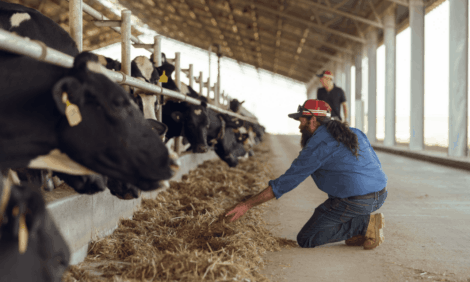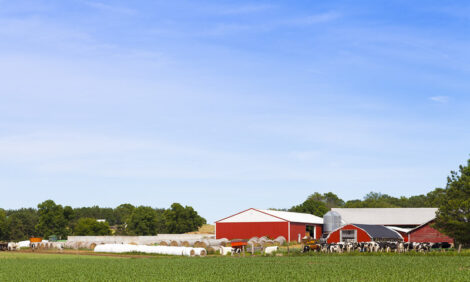



How to Supply Magnesium to Avoid Grass Tetany Risk
Avoiding grass tetany may require supplemented magnesium and Irish consultants Teagasc have outlined the possible ways of administering the mineral.Both spring and autumn calving cows going to grass suckling calves will be at risk from grass tetany, writes the Beef team at Teagasc (The Irish Agriculture and Food Development Authority).
Grass tetany can be particularly common when cows are forced to clean out paddocks when weather is changeable, as it is too often in April. The other factor that will increase the risk is the increase in the use of potassium fertilisers as we try and rebuild low soil phosphorous (P) and potassium (K) indexes.
The condition is due to an acute lack of magnesium (Mg) in the blood. Cows are unable to use stored Mg effectively and, for that reason, need a daily intake of between 20-30g of Mg.
There are a number of ways to supplement cows with Mg and it is a case of choosing the right one for your farm:
- Magnesium in the water. Mg can be added to the water as a soluble salt or some companies sell a soluble Mg solution. They can be added to drinking troughs manually or via a proportioner pump. For this method to work effectively, the only water source available to cows must be drinking troughs.
- Pasture dusting with cal/mag at a rate of 15-17kg/ha. Grass should ideally be damp when applying so that the dust sticks to the leaf. Labour intensive method.
- High Mg licks are commonly used and can be highly effective provided all the cows are taking them.
- Magnesium bolus. The number of boluses will vary depending on the product used and will generally give about four weeks protection. The downside to this method is that it is labour intensive and boluses can be regurgitated.
- Some individuals just supplement the cows with extra forage at grass, such as hay, silage, or straw;
- 50:50 Calmag molasses solution placed in a tub in the field with free access to stock. The tub needs to be stirred morning and evening to stop the calmag separating out. 20kg of molasses and 20kg of Calmag would do 50 cows for one week.
- Feed a high Mg nut to cows. This can be costly if you have to feed much more than 1kg of nuts to get the 50-60g of calmag needed. It can also be difficult in wet weather and there is a safety issues when feeding cows with young calves at grass.


